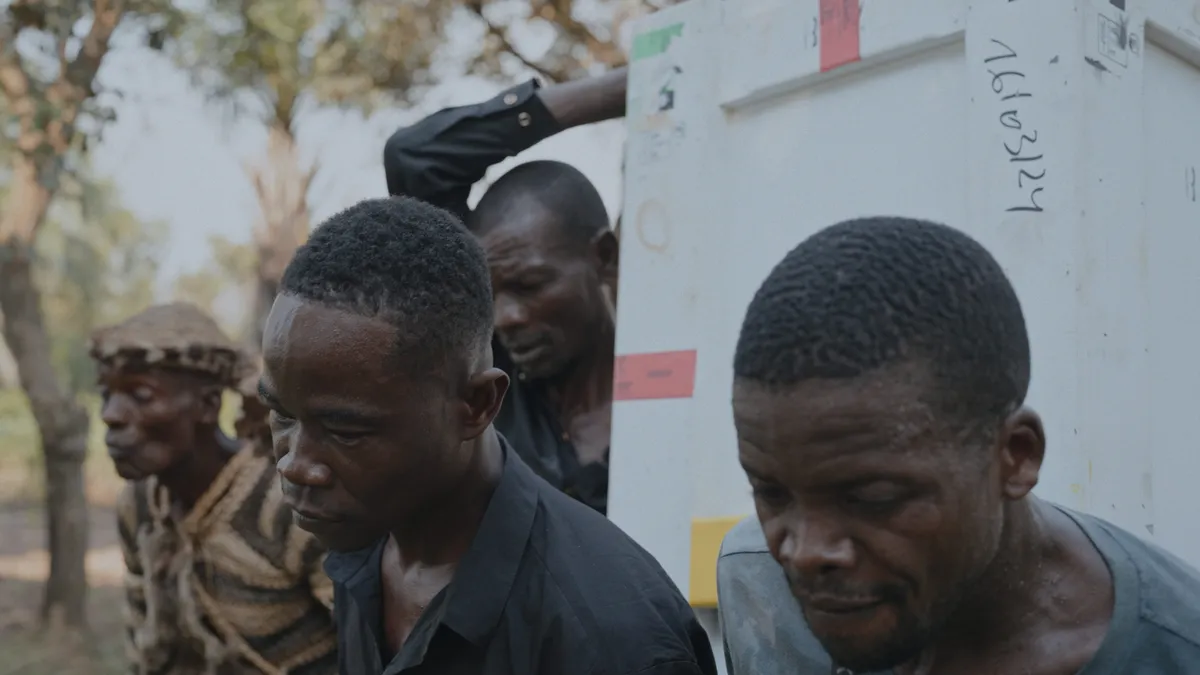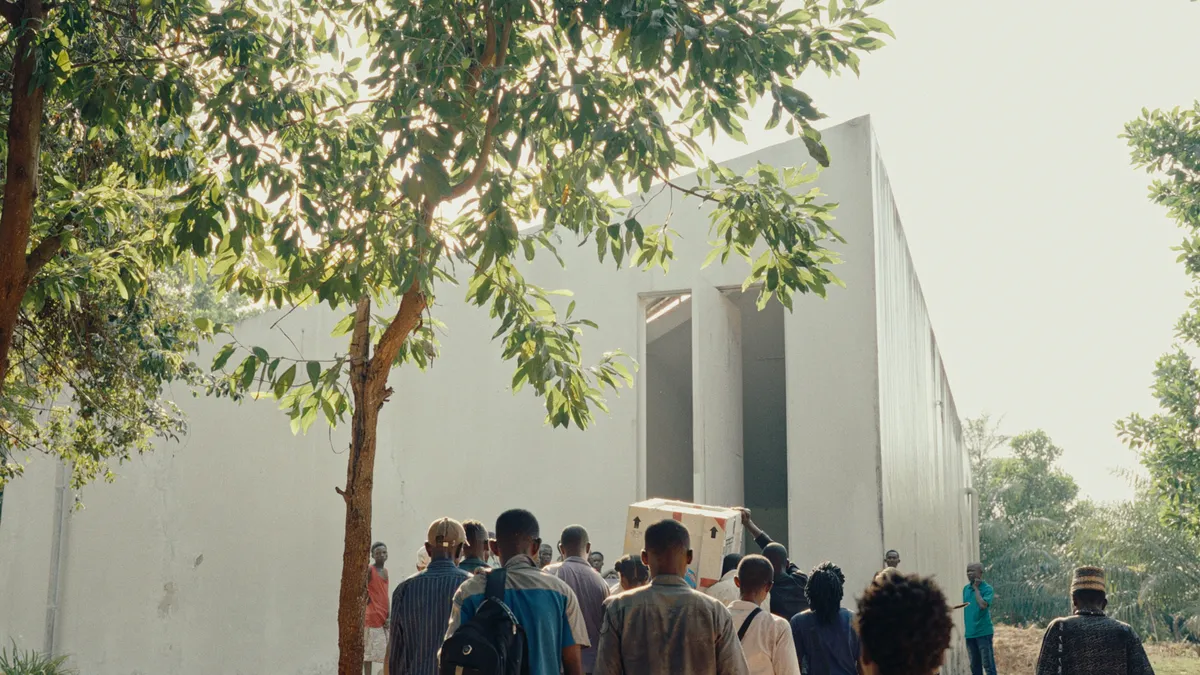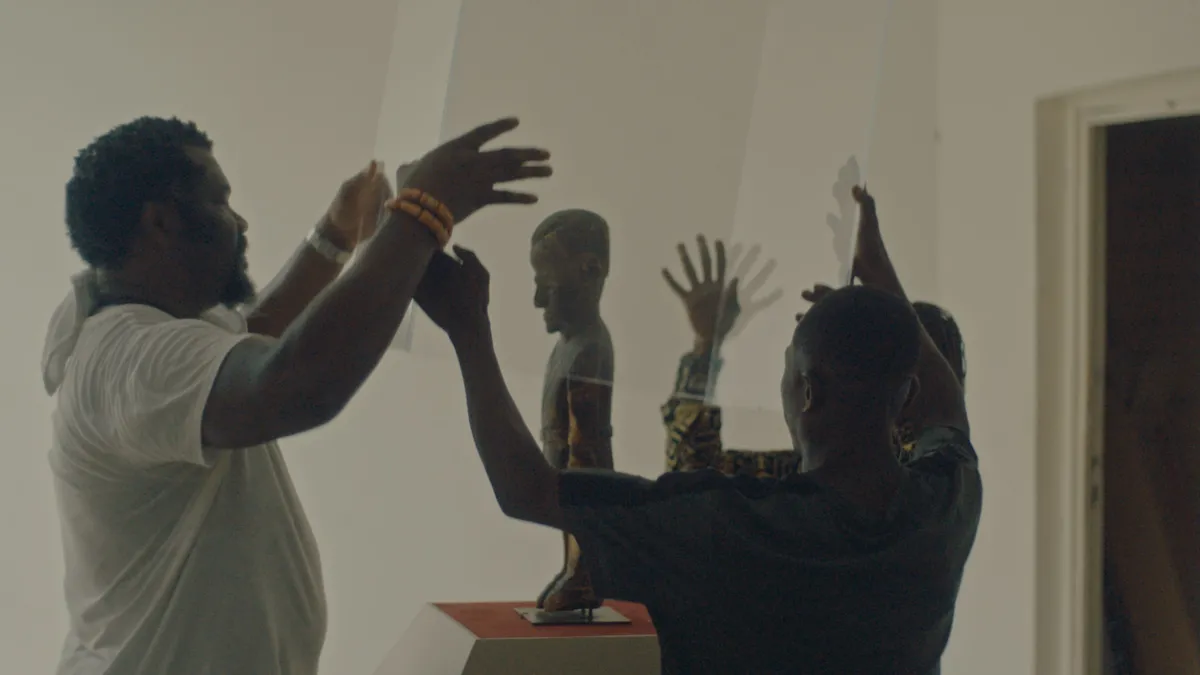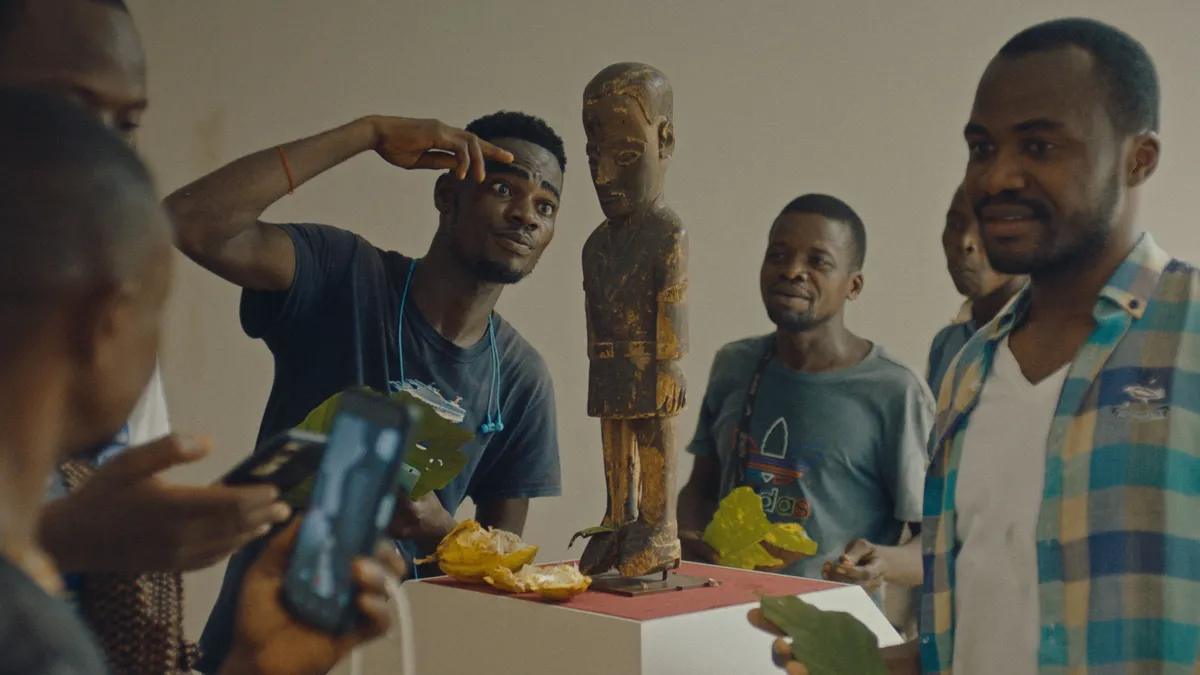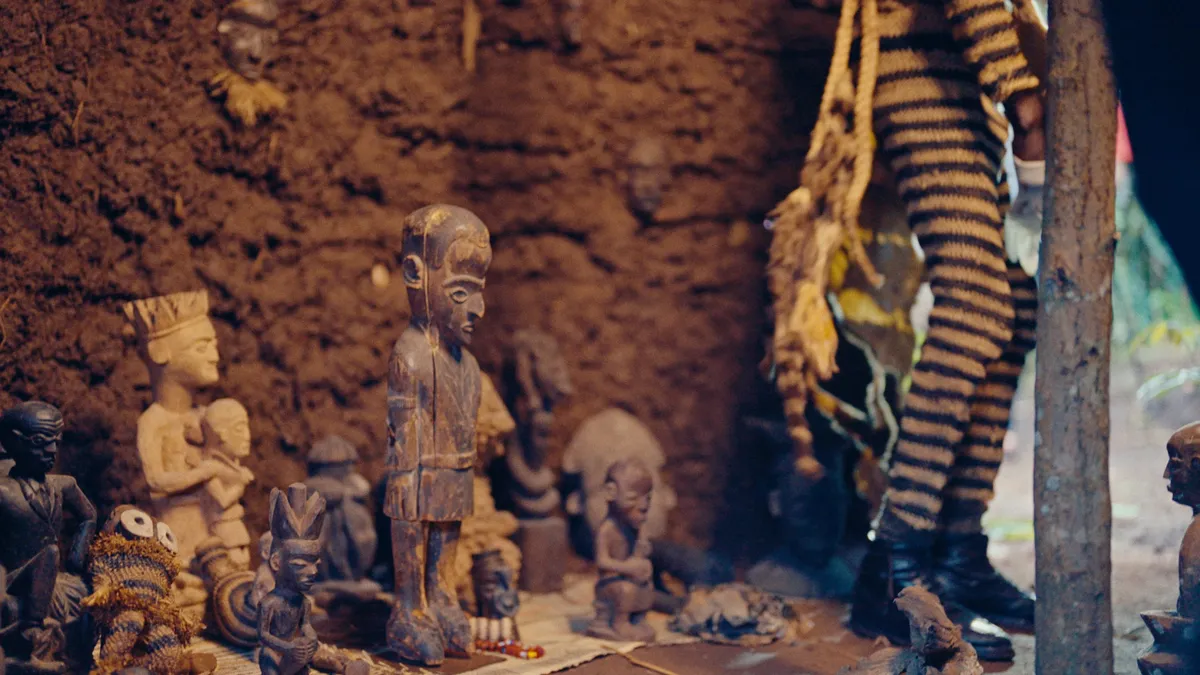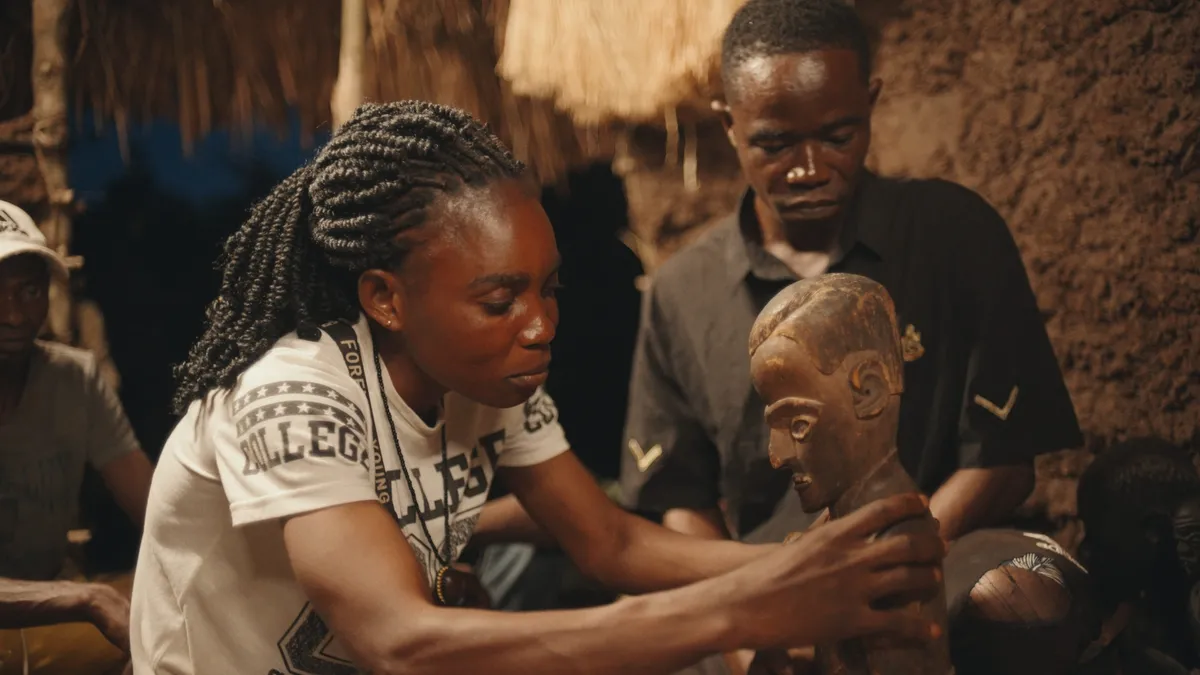Last week, the sculpture Balot arrived in Lusanga, Congo, from the Virginia Musem of Fine Arts (VMFA). On Tuesday 19 March, the artists’ collective Cercle d’Art des Travailleurs de Plantation Congolaise (CATPC) organised a special ceremony to welcome back the sculpture. In anticipation of the Dutch representation at the 60th edition of La Biennale di Venezia, CATPC applied for Balot’s temporary loan. CATPC is collaborating for the Dutch entry with artist Renzo Martens and curator Hicham Khalidi. The sculpture will be on public display at the White Cube in Lusanga from 20 April to 24 November 2024, in parallel with La Biennale di Venezia. At the Dutch pavilion in Venice, Balot will be on view via a live stream.
On 19 March, in the presence of the local community, press, local authorities and VMFA curator Dr Ndubuisi C. Ezeluomba – who made the loan possible – CATPC held a ceremony and ritual procession after which the sculpture was installed in the White Cube in anticipation of the exhibition, which will open as part of La Biennale di Venezia on 20 April. Ced’art Tamasala spoke on behalf of CATPC and the community, and speeches were made by Rene Ngongo (president of CATPC) and Eelco van der Lingen (director of the Mondriaan Fund).
During the ceremony, CATPC members re-enacted the history of the 1931 Pende uprising, which is directly linked to the Balot sculpture. CATPC then performed the live performance ‘The Judgement of the White Cube’. After the performance, the ‘spirit of the white cube’ walked into the White Cube, grabbed Balot and took it outside. There, the ritualistic procession to the Kissende, a ritual house for shrines, began, where the sculpture was placed between ancestral statues and statues of CATPC.
The sculpture has been part of the VMFA collection since 2015. The statue was created after the Pende Revolt of 1931 by a Kwilu Pende artist and was initially intended as a power object to harness Belgian Colonial Officer Maximilian Balot’s angry spirit. It was used as a force for protection against the plantation regime. For CATPC, given the current conditions on the former Unilever plantations and the strategies of resistance of the communities today, the return of this sculpture, even on a temporary basis, is of great significance.
Ced’art Tamasala on behalf of CATPC:
“We at CATPC are part of a new generation of plantation workers that is seeking, proposing and trying to find sustainable answers to the long-standing questions that are the key to the liberation of plantations. The return of Balot focusses our energy and strengthens our cause. Ultimately, by restoring the balance and correcting past injustices, the return of Balot will allow us to continue to buy back the land that was taken from us by colonial forces, it will enable us to abolish forced and destructive monoculture and to plant, regenerate and nourish back into existence our sacred forests.”
Learn more about the story behind the Balot sculpture on the Learn page.

